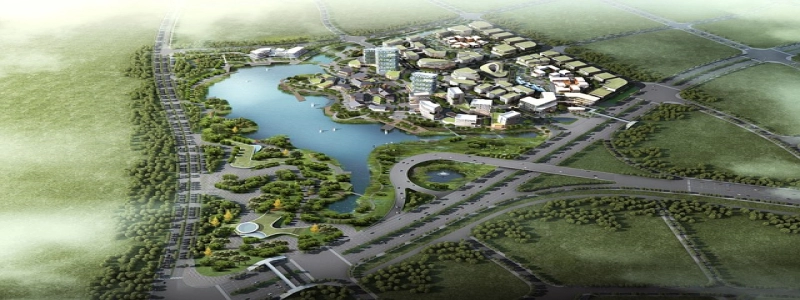Ethernet Attenuation Distance
1. Introduction
1.1 What is Ethernet attenuation?
1.2 Importance of understanding Ethernet attenuation distance
2. Factors Affecting Ethernet Attenuation
2.1 Cable Type and Quality
2.2 Distance
2.3 Interference and Noise
3. Ethernet Cable Categories
3.1 Cat5e
3.2 Cat6
3.3 Cat6a
3.4 Cat7
3.5 Comparison of cable categories
4. Understanding Attenuation
4.1 Definition of attenuation
4.2 Attenuation vs. Insertion Loss
4.3 Measurement units for attenuation
4.4 Effects of attenuation on Ethernet signals
5. Attenuation Distance
5.1 Maximum distances for different Ethernet cable categories
5.2 Factors affecting attenuation distance
5.3 Testing attenuation distance
5.4 Solutions for overcoming attenuation distance limitations
6. Conclusion
6.1 Importance of considering Ethernet attenuation distance
6.2 Implications for network design and installation
6.3 Future developments in Ethernet technology
1. Introduction
1.1 What is Ethernet attenuation?
Ethernet attenuation refers to the loss of signal strength that occurs as an Ethernet signal travels along a cable. This loss can be caused by various factors, including cable type, distance, and interference. Understanding Ethernet attenuation is crucial for ensuring reliable network performance.
1.2 Importance of understanding Ethernet attenuation distance
Knowing the attenuation distance for different Ethernet cable types is essential for designing and installing networks. It allows network professionals to determine the maximum distance between devices and plan for any necessary signal boosters or repeaters. Failure to consider attenuation distance can result in signal degradation, leading to network performance issues.
2. Factors Affecting Ethernet Attenuation
2.1 Cable Type and Quality
Different Ethernet cable categories, such as Cat5e, Cat6, Cat6a, and Cat7, have varying capabilities to handle attenuation. Higher-quality cables with better shielding and insulation can minimize signal loss, resulting in longer attenuation distances.
2.2 Distance
The length of the cable plays a significant role in signal attenuation. As the distance increases, the signal gradually weakens, which can lead to data loss or corruption. Higher-quality cables can typically handle longer distances before attenuation becomes a significant concern.
2.3 Interference and Noise
Interference from other cables, electrical equipment, or environmental factors can introduce additional attenuation. Proper cable routing, shielding, and grounding techniques can help minimize interference and maintain signal integrity.
3. Ethernet Cable Categories
3.1 Cat5e
Cat5e cables are commonly used for Ethernet networks and offer good performance with limited attenuation over short to medium distances. They support data transfer rates of up to 1 Gbps and have a maximum attenuation distance of 100 meters.
3.2 Cat6
Cat6 cables provide enhanced performance compared to Cat5e cables. They offer lower attenuation and higher bandwidth capabilities, supporting data transfer rates of up to 10 Gbps. The maximum attenuation distance for Cat6 cables is also 100 meters.
3.3 Cat6a
Cat6a cables are an improved version of Cat6, designed to handle higher frequencies and support 10 Gbps data transfers over longer distances. They have a maximum attenuation distance of 100 meters.
3.4 Cat7
Cat7 cables are the most advanced Ethernet cables commercially available. They feature extensive shielding and improved plug design for reduced crosstalk and attenuation. Cat7 cables support data transfer rates of up to 10 Gbps over a maximum attenuation distance of 100 meters.
3.5 Comparison of cable categories
Comparing the different Ethernet cable categories helps determine the best option based on the desired data transfer rates, attenuation distance requirements, and budget constraints.
4. Understanding Attenuation
4.1 Definition of attenuation
Attenuation refers to the reduction in signal strength as it travels along the cable. It is measured in decibels (dB) and represents the difference between the signal’s input power and output power.
4.2 Attenuation vs. Insertion Loss
Attenuation and insertion loss are related but distinct terms. Attenuation measures the signal strength reduction over distance, while insertion loss refers to the decrease in signal power caused by connectors, splices, or other network components.
4.3 Measurement units for attenuation
Attenuation is measured in decibels per unit length (dB/m) or decibels per kilometer (dB/km), depending on the cable type and testing method.
4.4 Effects of attenuation on Ethernet signals
Excessive attenuation can result in degraded signal quality, leading to dropped packets, reduced data transfer rates, and increased error rates. It is crucial to minimize attenuation to ensure reliable network performance.
5. Attenuation Distance
5.1 Maximum distances for different Ethernet cable categories
Each Ethernet cable category has a maximum attenuation distance specified by industry standards. For example, the maximum distance for Cat5e, Cat6, Cat6a, and Cat7 cables is 100 meters.
5.2 Factors affecting attenuation distance
Attenuation distance can vary based on factors such as cable quality, signal frequency, signaling technology, and noise levels. Higher-quality cables and lower-frequency signals typically allow for longer attenuation distances.
5.3 Testing attenuation distance
Network professionals can use specialized testing equipment to measure the attenuation distance of Ethernet cables accurately. These tests help identify any cable faults or performance issues that may affect network reliability.
5.4 Solutions for overcoming attenuation distance limitations
To overcome limitations in attenuation distance, network installers can use signal boosters, repeaters, or switches to regenerate the signal. Fiber-optic cables can also be used for longer-range Ethernet connections with negligible attenuation.
6. Conclusion
6.1 Importance of considering Ethernet attenuation distance
Understanding Ethernet attenuation distance is crucial for designing and installing reliable networks. It ensures optimal performance by determining the maximum distance between devices and implementing appropriate signal boosting solutions.
6.2 Implications for network design and installation
Knowing the attenuation distance helps network professionals choose the appropriate Ethernet cable category, plan cable routes, and consider factors such as interference and signal regeneration.
6.3 Future developments in Ethernet technology
Advancements in Ethernet technology, such as improved cable categories and signal processing techniques, continue to reduce attenuation and increase data transfer rates over longer distances. Monitoring these advancements is essential for staying abreast of network design best practices.








